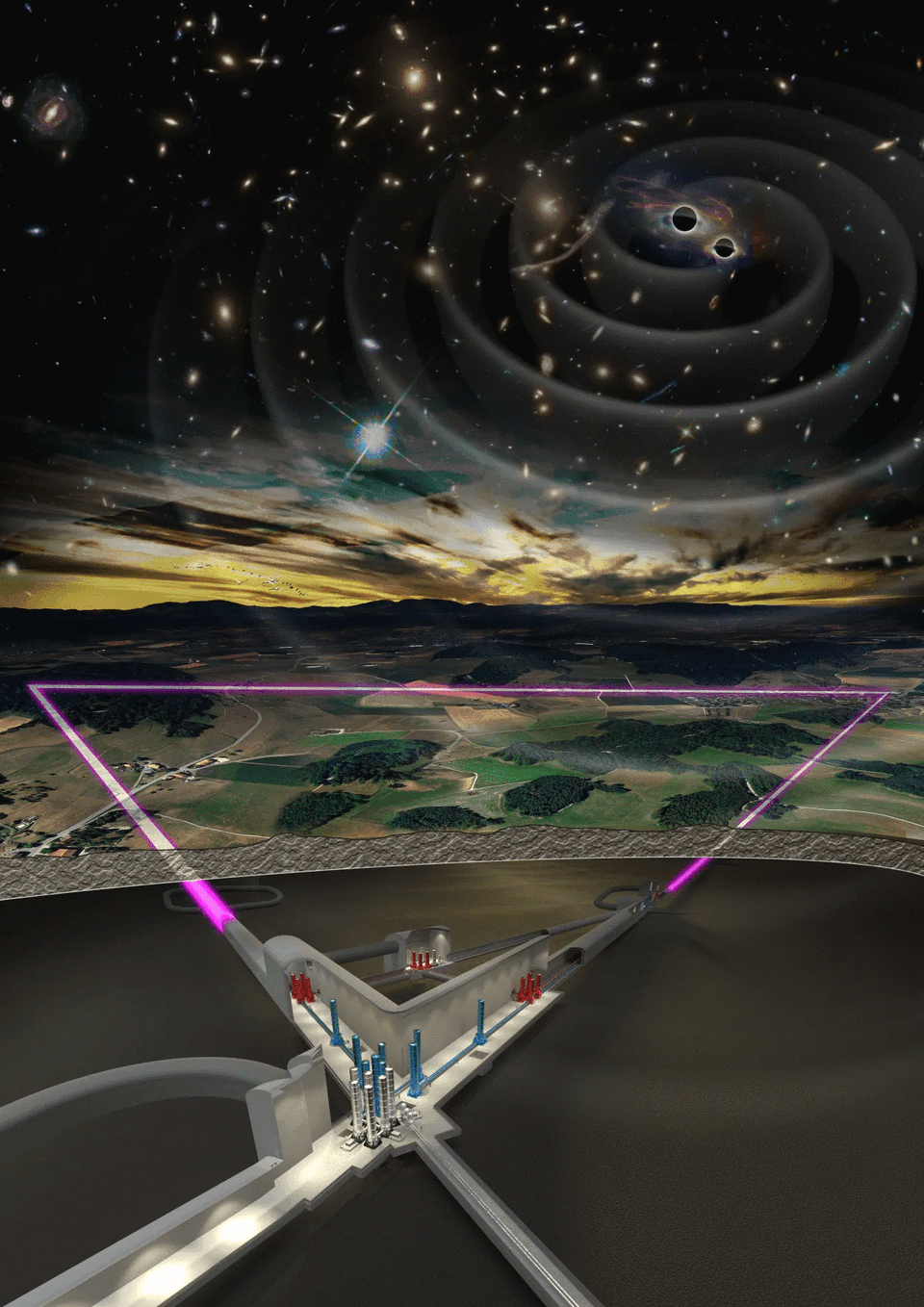On June 30th, the European Strategy Forum on Research Infrastructures (ESFRI) decided to include the Einstein Telescope (ET) in the 2021 upgrade of its roadmap. This fact confirms the relevance of this major international project for a next generation gravitational waves observatory for the future of research infrastructures in Europe and gravitational wave research at global level.
The Italian government submitted the proposal on September 9th, 2020 supported by the Netherlands, Belgium, Poland and Spain.
“The preparation of the proposal has been a two years large effort involving several research institutions and universities, now comprising the Einstein Telescope consortium, belonging to ten European countries and having real interdisciplinary competences”, says Michele Punturo, Coordinator of the ET-ESFRI proposal preparation.
In Poland the consortium is led by the Astronomical Observatory of University of Warsaw with the participation of several other institutes, including the Nicolaus Copernicus Astronomical Center and the AstroCeNT. Prof Bulik, the leader of the Polish ET Consortium, says:
”This marks a great leap forward on the path to make the Einstein Telescope a reality. I have huge hopes for the science we will be able to accomplish. Additionally this opens the door for greater involvement of Polish science and industry in this exciting project. Reaching the sensitivity goal of ET at low frequencies will require precise monitoring of the environmental conditions. AstroCeNT is developing ultra precise seismic and infrasound sensors for ET.”
The Einstein Telescope was identified after a long and accurate process of evaluation and selection. During the ESFRI Assembly meeting, delegates from 41 countries finally voted in favor of the Einstein Telescope. This official European approval now brings the project into a new phase. The scientific institutions involved from ten countries (Belgium, Germany, Hungary, Italy, Norway, Spain, Switzerland, Poland, the Netherlands, UK) will now have to intensify their research and development work on the Einstein Telescope and gravitational waves. It will also speed up the ongoing subsurface studies for the characterization and evaluation of the candidate sites that could host the underground infrastructure.
A NEW WINDOW ON THE UNIVERSE
The Einstein Telescope is a future underground observatory for gravitational waves. The instrument will be much more sensitive than existing gravitational-wave detectors. Therefore, the observatory will enable scientists to peek into the ‘dark ages’ of the universe for the first time. Gravitational waves were detected for the first time in 2015 and offer a new way of studying the universe. Until their first detection, scientists could only study the universe by looking at light or radiation, but with gravitational waves they can observe vibrations of spacetime itself. Although the existence of gravitational waves was already predicted by Albert Einstein a hundred years ago, he did not expect it was possible to ever detect them. Yet with the mind blowing technological developments of the last century, scientists and engineers have managed to reach the sensitivity and precision that is needed to observe them. This opened a new era in the study of the universe, the era of gravitational wave and multi messenger astronomy, and led to a Nobel Prize in 2017. The Einstein Telescope will lead to many more unimaginable discoveries in the future in this new field of research.
Polish scientists have contributed to the science case of the Einstein Telescope and to the site characterization of the ET candidate sites. In particular a team from the the University of Warsaw, Warsaw University of Technology and from Nicolaus Copernicus Astronomical Center installed seismic sensor networks in several candidate sites in Poland, Spain, Hungary and Italy to characterize the seismic noise. Currently we are involved in detailed characterization of the Sos Enattos site in Sardinia.
ABOUT ESFRI AND THE ESFRI ROADMAP
ESFRI, the European Strategy Forum on Research Infrastructures, is a strategic instrument to develop the scientific integration of Europe and to strengthen its international outreach. The mission of ESFRI is to support a coherent and strategy-led approach to policymaking on research infrastructures in Europe, and to facilitate multilateral initiatives leading to the better use and development of research infrastructures, at EU and international level. ESFRI’s delegates are nominated by the Research Ministers of the Member and Associate Countries and include a representative of the Commission.
The ESFRI Roadmap identifies the most promising European scientific structures on the basis of an in-depth evaluation and selection procedure, and includes the ESFRI Projects, i.e. new research infrastructures under construction, and the ESFRI Landmarks, i.e. research infrastructures already implemented with success. All previous updates of the ESFRI Roadmap have proved to be very influential and have provided strategic guidance for investment by member states and associated countries, even beyond the scope of research infrastructures.







